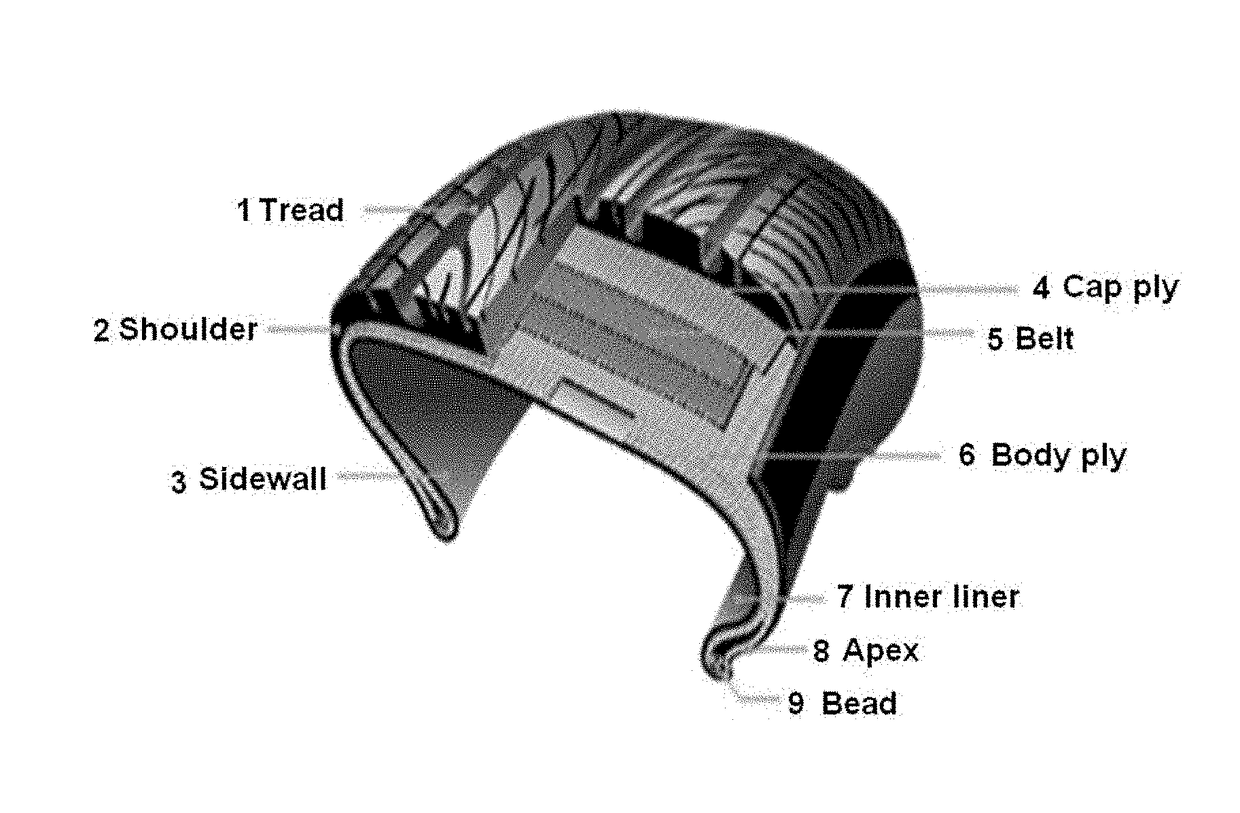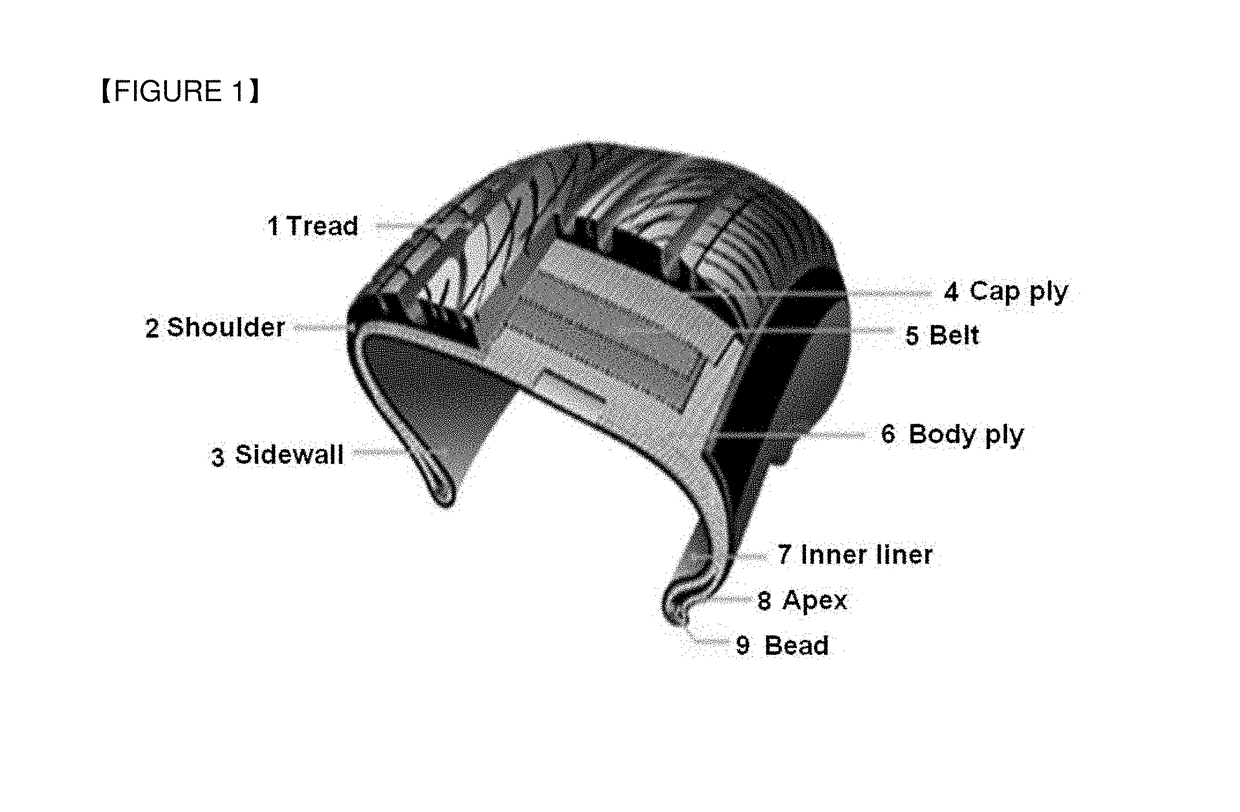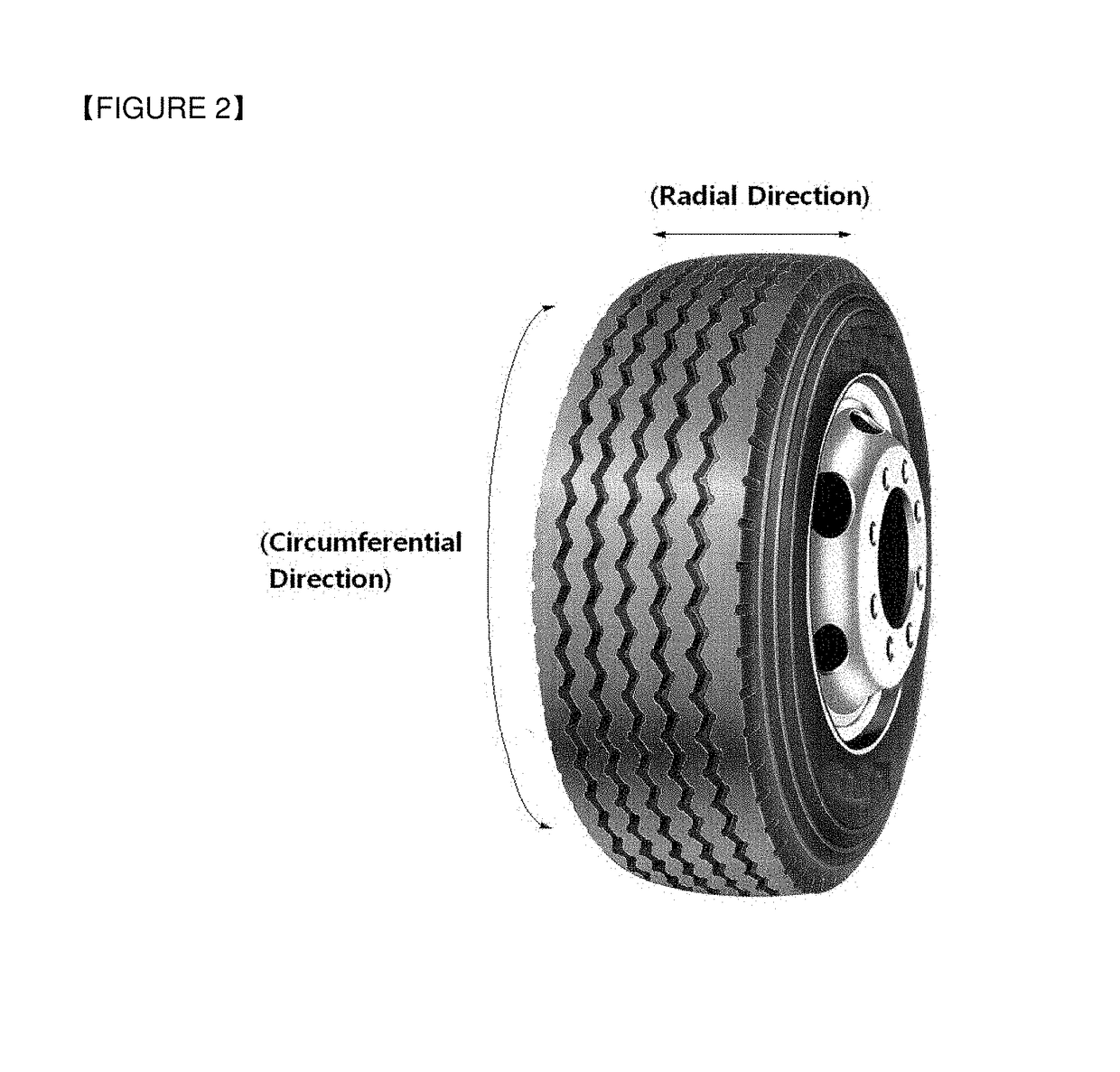Film for tire inner liner, method for manufacturing film for tire inner liner, pneumatic tire, and method for manufacturing pneumatic tire
a technology for pneumatic tires and inner lines, which is applied in the direction of film/foil adhesives, transportation and packaging, other domestic articles, etc., can solve the problems of inability to secure sufficient adhesion, increase the total weight of tires, and degrade automobile mileage, etc., to achieve secure excellent durability and fatigue resistance, and uniform and excellent physical properties
- Summary
- Abstract
- Description
- Claims
- Application Information
AI Technical Summary
Benefits of technology
Problems solved by technology
Method used
Image
Examples
example 1
(1) Manufacturing of a Base Film
[0210]35 wt % of a nylon 6 resin having a relative viscosity (96% sulfuric acid solution) of 3.3 and 65 wt % of a copolymer resin having a relative weight average molecular weight of 145,000 (including 50 wt % of polyamide-based repeat units and 50 wt % of polyether-based repeat units) were mixed, and the supplied mixture was extruded through a T-type die (die gap—1.0 mm) having a width of 2000 mm at a temperature of 260° C. while maintaining uniform flow of melted resin. The extruded melted resin was cooled and solidified to a film with a uniform thickness [average thickness: 100 μm] using an air knife on the surface of a cooling roll that was controlled to 25° C.
(2) Coating of Adhesive and Drawing in TD
[0211]Resorcinol and formaldehyde were mixed at a mole ratio of 1:2, and then condensed to obtain a condensate of resorcinol and formaldehyde. 12 wt % of the condensate of resorcinol and formaldehyde and 88 wt % of styrene / butadiene-1,3 / vinylpyridine ...
example 2
[0215]A film for a tire inner liner was manufactured by the same method as Example 1, except for the following processes (1) and (2).
[0216](1) The temperature in the first section of the hot air oven was set to 100° C., the temperature of the second section was set to 130° C., the temperature of the third section was set to 140° C., and in the second section of the hot air oven, the base film was drawn 40% in the transverse direction (TD) using a mechanical grip.
[0217](2) The speed of a winder that wound the base film on which an adhesive layer was coated was adjusted to maintain residence time of the base film in the hot-air oven at about 120 seconds, and heat treatment of the adhesive layer and drawing in the transverse direction (TD) were completed.
example 3
[0218]A film for a tire inner liner was manufactured by the same method as Example 1, except for the following processes (1) to (3).
[0219](1) The die gap of the t-type die was set to 0.7 mm.
[0220](2) The temperature of the first section of the hot air oven was set to 120° C., the temperature of the second section was set to 120° C., and the temperature of the third section was set to 150° C., and in the first section and the second section of the hot air oven, the base film was respectively drawn 5% in the transverse direction (TD) using a mechanical grip to a draw total of 10%.
[0221](3) The speed of a winder that wound the base film on which an adhesive layer was coated was adjusted to maintain residence time of the base film in the hot-air oven at about 120 seconds, and heat treatment of the adhesive layer and drawing in the transverse direction (TD) were completed.
PUM
| Property | Measurement | Unit |
|---|---|---|
| length | aaaaa | aaaaa |
| width | aaaaa | aaaaa |
| width | aaaaa | aaaaa |
Abstract
Description
Claims
Application Information
 Login to View More
Login to View More - R&D
- Intellectual Property
- Life Sciences
- Materials
- Tech Scout
- Unparalleled Data Quality
- Higher Quality Content
- 60% Fewer Hallucinations
Browse by: Latest US Patents, China's latest patents, Technical Efficacy Thesaurus, Application Domain, Technology Topic, Popular Technical Reports.
© 2025 PatSnap. All rights reserved.Legal|Privacy policy|Modern Slavery Act Transparency Statement|Sitemap|About US| Contact US: help@patsnap.com



